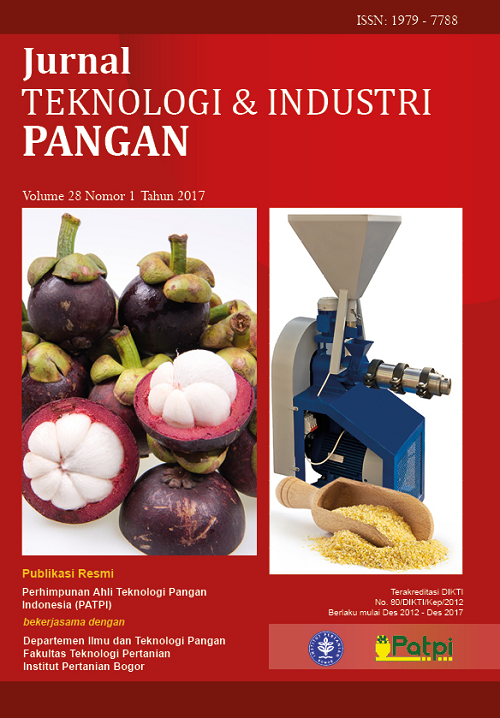OPTIMASI PEMBUATAN SOHUN UBI JALAR MENGGUNAKAN EKSTRUDER PEMASAK-PENCETAK
Abstract
Sweet potatoes have a fairly diverse varieties and the difference in varieties is assumed to influence the starch physicochemical properties. The objective of this research was to optimize the sweet potato vermicelli production using a cooking-forming extruder. The starch characterization included proximate analysis, starch content, amylose content and gelatinization profile. Sweet potato vermicelli was made with the starch of sweet potaoto Ace variety. Meanwhile, process and formula optimization was carried out using Response Surface Methodology (RSM). The amount of starch used was in the range of 62.5–69.0 g, the amount of water was 31.0–37.5 g, extruder temperature of 80-90°C and screw rotation of 90-120 rpm. The starch of sweet potato Ace variety had the highest level of carbohydrate, total starch and amylose (99.16, 86.91, and 8.77% db, respectively). It also had the most excellent cooking endurance as shown by the lowest breakdown viscosity (5183.33 cP), and the best tendency of retrogradation as shown by the highest setback viscosity (1328.00 cP). The optimum combination for the vermicelli making was 65.2 g of starch, 34.8 g of water, extruder temperature of 85°C and screw rotation of 115 rpm. The sweet potato vermicelli from the optimum condition resulted in 20.85% actual cooking loss and 164.98% elongation. Process improvement with freezing and fan drying of the vermicelli produced a better quality of vermicelli with 12.90% cooking loss and 196.42% elongation.
Authors

This work is licensed under a Creative Commons Attribution-NonCommercial 4.0 International License.

